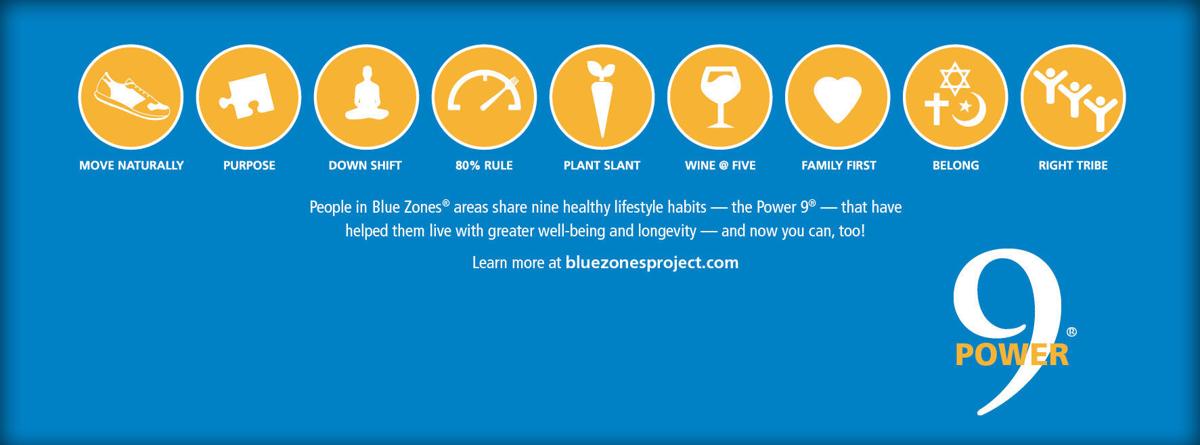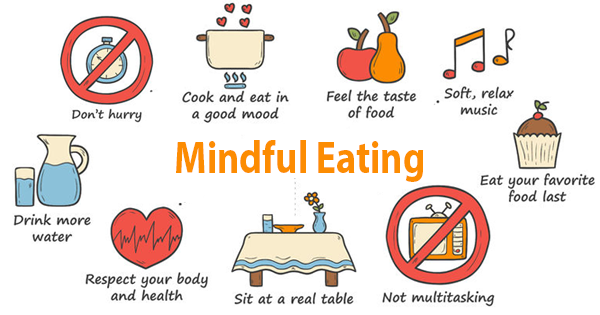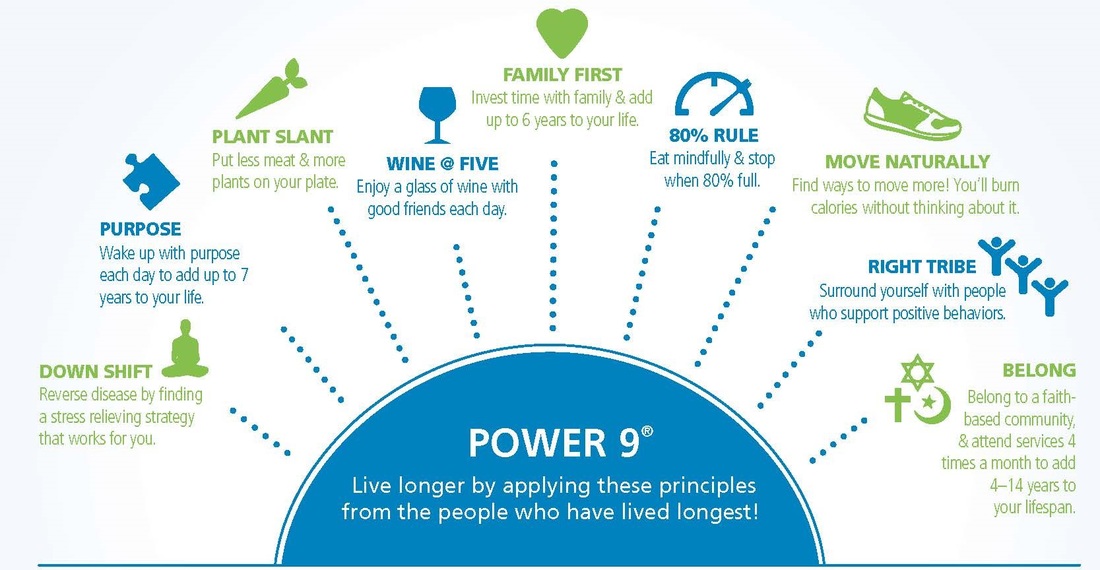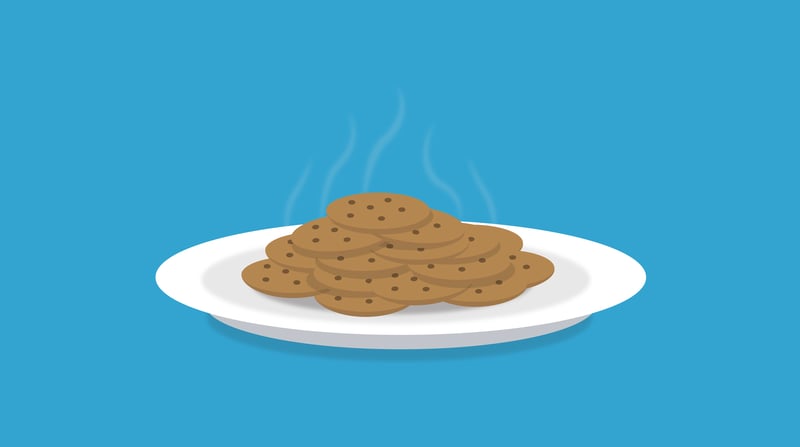Wellness staff strive to positively impact the campus environment to affect student behavior and create a healthy and safe place that fosters student success. Social Norms campaigns, Healthy Campus 2020 initiatives, and online courses about alcohol, drugs, and sexual violence required for incoming students are some examples. Comprehensive wellness programs include environmental management as well. This work includes policy and enforcement, working with the local community on alcohol access and promotion, and alcohol-free options for social or extracurricular events.
While these effective options are at our disposal to affect campus wellness, there are also outstanding community initiatives happening that may inspire our wellness work. If you feel you’ve heard it all before when it comes frameworks for wellness, it’s time to check out “The Blue Zones.”
Dan Buettner identified these as the top five cities around the world with the greatest life expectancy. Dubbed as “The Blue Zones,” more people here reach age 100 than anywhere else in the world due to their unique characteristics in lifestyle.
- Okinawa, Japan
- Ikaria, Greece
- Sardinia, Italy
- Nicoya, Costa Rica
- Loma Linda, California
The incredible health of residents in these areas went on to inspire “The Blue Zones Project” in the United States. These aspiring Blue Zones include counties such as Pottawatomie County, cities like Fort Worth, regions like Southwest Florida, and entire states such as Oregon and Hawaii. These areas are seeing results, including a reduction of healthcare claims by 49% and of obesity by 14%.
The theme of Blue Zones is longevity — and while this might not a driving motivator for college students, longevity starts with habits and values we develop as a young adult. A quick study of the nine healthy habits of those living in The Blue Zones (trademarked as the Power 9) seems worthwhile.
Here are some ways your campus community can invigorate your wellness efforts or reaffirm your current programming.
The Power 9 of the Blue Zones and Campus Wellness

1. Move naturally
We often think of exercise as going to the gym, Crossfit, or running marathons. It’s usually scheduled on our calendar — we start, we finish, then go on with our day. In contrast, “move naturally” is a mindset of moving throughout the day without thinking about it. This could be by choosing movement in daily life (taking the stairs), or because an environment lacks conveniences and forces us to be more active (growing and harvesting our own food).
With campus wellness, “move naturally” could look like ensuring bike and walk paths are clearly marked and designed to flow well with traffic to encourage students to bike and walk to class. Trails can be included in campus expansion projects to invite more physical activity, or “walking meetings” could become a trend on your campus. Starting a campus community garden offers a host of benefits, including the natural movement that comes from tending to and harvesting a garden.
For universities connected to their downtown areas, promoting local daytime finds within walking distance can attract students to explore in a way other than going to bars at night. The ways students are involved on campus can promote moving naturally as well, through organizations like Habitat for Humanity, sports clubs and intramurals, or walking/running programs. Ensure that your event is inclusive of students who use mobility devices by making sure that there are smooth pavements for wheels to pass over and that destinations are accessible.
2. Know your purpose
Knowing your purpose can add up to seven years of life expectancy, and that journey starts as a young adult. Discovering one’s purpose is a driving mission of a student’s time in college. We can encourage students to think of their career choice not only as a means to an income but as a way to unearth why they wake up in the morning.
While choosing a major is part of this journey, it isn’t the whole of it. Student involvement opportunities exist to help students further learn about themselves and their purpose. For students who are not as traditionally involved, we can frame this aspect of campus life as an extension of learning or as complementary to their degree, helping them achieve occupational wellness.
Clubs, organizations, service learning, and civic engagement help students leave our institutions on a path to fulfillment.
3. Downshift
Life comes with stress, even in The Blue Zones. We often talk about the impact of stress on students in the short term — the freshman 15, a decline in grades, lashing out at roommates, etc. On a larger scale, stress can lead to inflammation and age-related disease. This makes it even more critical that students learn coping skills now. Why not learn from those who live the longest?
Finding time to meditate, nap, pray, exercise, or enjoy friends are ways residents in the Blue Zones downshift.
On our campuses, we can challenge the misconception that “always busy is always better” and work to decrease the competitiveness of students comparing how exhausted they are or how many meetings they have that week. We can talk more about the relationship between emotional health and physical health, encourage students to unplug from technology regularly, and share options for them to downshift that exist on- and off-campus.
Helping students discover their personal style of stress management provides them with skills that not only help them survive college now, but their ability to downshift may even prevent heart disease down the road.

4. 80% rule
Multitasking in college can be the norm. Chowing down dinner while studying kills two birds with one stone, right? This mindless eating, however, means students miss this healthy habit: Eating until 80% full. What students are eating is important as well. College can be a time of cheap pizza, all-you-can-eat dining halls, or fast food at any time of day. This means not only consuming unhealthy food, but in an excessive amount, which can lead to health problems.
In addition to nutrition-related programming, education about mindful eating can be a great way to help students learn to practice in this 80% rule. Teaching students, for example, that it takes 20 minutes to start to feel full can help them be attuned to their bodies and their food intake. Eating off smaller plates, eating at a table instead of in front of the TV, and other mindful eating tips can become part of our wellness education.

5. Plant slant
In the Blue Zones, diets are mainly centered around plants — meat is eaten a few times a month, and in small quantities. Instead, beans, nuts, and legumes are protein stars, while an abundance of fruit and vegetables make up the rest of a diet.
Going “plant slant” may feel like a tall order, but these habits are worth considering: Living plant slant can reduce the damage of heart disease within weeks and the “building blocks for heart disease [are] already found within nearly all American teenagers’ bodies.”
One plant slant habit is to eat more beans: If the average American ate a cup of beans per day, the habit of nearly all centenarians, it could increase life expectancy by four years.
As often with students, however, the key is not just saying what to do, but showing how to do it.
Luckily, campuses can integrate plant slate in various ways. Nutrition programming can offer creative ways to eat more fruits and vegetables. Vegetarian/vegan options can be regularly offered in dining halls. Cooking demos and tasting programs can be a fun way for students to sample vegetables and recipes they’ve never tried before. Farmers markets or community gardens give students access to more vegetables at an affordable cost. Lastly, encouraging students to try local ethnic restaurants is a great way to get them to explore foods they have never tried before, which could offer new and delicious ways to eat vegetables.
6. Wine at 5
With the exception of Seventh Day Adventists in Loma Linda, CA, those in the Blue Zones drink moderately and regularly, with friends and/or food, at 1-2 glasses of wine per day. However, the quality and nutritional value of the wine is a consideration. For example, Sardinian Cannonau wine is valued due to having the “highest levels of polyphenols of any wine, antioxidants linked to heart health, protecting from cardiovascular disease”.
While college students may not be asking their bartender for Sardinian Cannonau anytime soon, there are takeaways about “Wine at 5” for campus wellness. For example, wellness staff can educate students about the best options for alcohol regarding calories or quality of the product. A healthy relationship with alcohol seems to be an understood expectation in the Blue Zones, which is also a great approach to campus wellness.
We can educate students to have food available at parties, offer activities other than drinking at their events, and focus on time with their friends rather than focus on alcohol. Teaching moderation through Social Norms campaigns and harm reduction education is in line with a “Wine at 5” mindset as well. Of course, those in the Blue Zones are eating quality food when drinking their 1-2 glasses of wine per day, so continuing to promote healthy eating habits can encourage a positive lifestyle that will last a lifetime.
7. Family first
Centenarians in the Blue Zones are intentional about putting family first: Having aging parents or grandparents nearby, being partnered, and/or not only having children but spending quality time with them. This closeness can lower disease and mortality risks, and increase life expectancy.
When students come to college, however, they often move away from home, leaving relatives and familiarity behind. Their home life might be positive and thriving, or dysfunctional and unhealthy. For the former, we can help students find ways to stay in touch with loved ones and adjust to being away. For the latter, we can help them find community and chosen family in their new environment, prepare them for school breaks and summers back at home, and learn how to navigate communication with family.
In addition, we can offer programming that connects students to both young and old spirits. Collaboration with local senior homes can be a fun, meaningful way to create opportunities for seniors and college students to connect. Trends here include students living with senior citizens, such as in Cleveland, OH, Hollywood, CA, and Des Moines, IA. Alternatively, working with organizations like Big Brothers, Big Sisters or The Boys & Girls Club provides students a chance to invest in children who need support and build connections across generations.
8. Belong
“Belong” speaks to involvement in a faith-based community. From a longevity standpoint, research shows life can be extended by 4-14 years if attending faith-based services four times per month. Some students come to college with an established faith and grow in that faith while in school. For others, college can be a time of questioning their faith (or exploring others), setting aside the beliefs they grew up with in pursuit of other interests, or abandoning spiritual things altogether.
Regardless of a student’s journey, our ability to support a student in their process and make resources available to them is part of how we can help them find connection in this aspect of wellness. Knowing the benefits of belonging to a community like a faith-based one, we can encourage students to make time to find their fit, or even explore for general interest, as recent research shows a decline in exposure to religious diversity among first-year students.

9. Right tribe
“Right tribe” refers to surrounding yourself with supportive, healthy-minded friends who are a good influence, and can provide comfort during life’s downs and celebrate with you in life’s happy moments. Residents of the Blue Zones are either born into or create environments where their social networks are made up of “right tribe” people.
Students coming to college are looking for their group. While this can be a time marked by exploration and peer pressure, we can encourage them to think critically about who they want to become and who may be good teammates in that process.
We can talk with students about their goals, and ask who they know that inspires them or would support them in that pursuit. We can promote mentorship in clubs and organizations and find opportunities to introduce students to those who may support them. We can educate students about healthy relationships so they feel confident choosing people to surround themselves with and understand what unhealthy relationships look like in case they need to refer a distressed student.

As we continue to learn more about the Blue Zones in the years to come, and as The Blue Zones Project continues to grow and take shape in the United States, higher education would be remiss not to learn from this body of work as it seeks to enhance campus wellness.
In helping prepare our students for a degree, we can also help prepare them to “live longer, better.”
Editor’s Note: Hey reader! We recently released a podcast that you might enjoy. Here’s an episode that’s related to this blog post. You can learn more about Will There Be Food? here.





